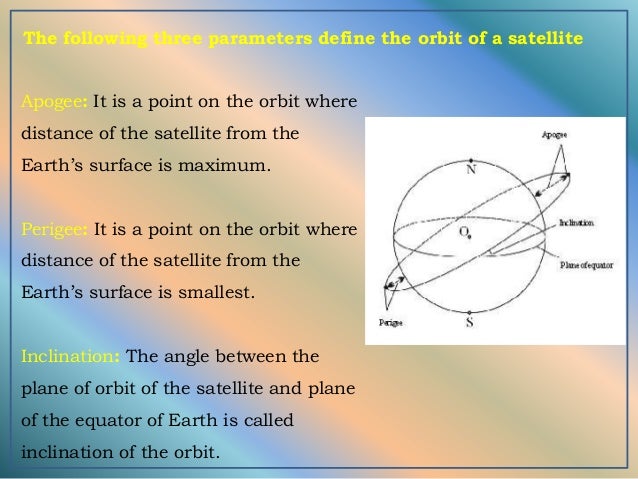Source: Landsat-6 Programming and Control Handbook
Schematic diagram illustrating the geometry of a sun-synchronous orbit for the morning descending node of Landsat.
太陽同期軌道(たいようどうききどう、英語: Sun-synchronous orbit 、略称:SSO)は、極軌道の一種で、地球の場合、平均すると地球の公転と同期するように軌道面が変化するため、太陽光線と軌道面とのなす角がほぼ一定となる、という特徴がある。. A sun-synchronous orbit (SSO), also called a heliosynchronous orbit, is a nearly polar orbit around a planet, in which the satellite passes over any given point of the planet's surface at the same local mean solar time. More technically, it is an orbit arranged so that it precesses through one compl. Sun-synchronous orbit (SSO) is a particular kind of polar orbit. Satellites in SSO, travelling over the polar regions, are synchronous with the Sun. This means they are synchronised to always be in the same ‘fixed’ position relative to the Sun. This video illustrates the principle of Sun-synchronous orbits used by EUMETSAT's Metop satellites. The satellite's orbital plane is indicated by the red tor. The SENTINEL-2 mission orbit is sun-synchronous. Sun-synchronous orbits are used to ensure the angle of sunlight upon the Earth's surface is consistently maintained. Apart from small seasonal variations, anchoring of the satellites orbit to the angle of the sun minimises the potential impact of shadows and levels of illumination on the.

This schematic appears in the Landsat 6 Programming and Control Handbook that was prepared by Martin Marietta Astro Space in 1993.
Like all of the Landsat satellites, Landsat 6 would have been in a sun-synchronous orbit had its launch been successful.
The L6 Handbook tells us, “for a nominal sun-synchronous orbit (i.e., one that precesses at a rate of 0.9856°/day or 360°/year), the scene and spacecraft illumination conditions vary throughout the year but repeat on a yearly cycle. The changes during the year occur because apparent Sun motion in the ecliptic plane is non-uniform, whereas the satellite orbit precession is uniform relative to the equatorial plane. The parameter that determines the actual illumination time histories is the orbit o’clock angle. This is the angle between the ascending or descending node and the “mean sun” vector. For a perfect unsynchronized orbit, the orbit o’clock angle remains constant. Furthermore, the Local Mean Sun Time (LMST) of the nodal crossing is the orbit o’clock angle. Fullcontact contacts. The relationship is shown in [this figure].”
This orbit is a special case of the polar orbit. Like a polar orbit, the satellite travels from the north to the south polesas the Earth turns below it. In a sun-synchronous orbit, though, thesatellite passes over the same part of the Earth at roughly the same local timeeach day. This can make communication and various forms of data collectionvery convenient. For example, a satellite in a sun-synchronous orbit couldmeasure the air quality of Ottawa at noon.

Sun Synchronous Orbit Purpose

Sun Synchronous Orbit Definition
There is a special kind of sun-synchronous orbit called a dawn-to-duskorbit. In a dawn-to-dusk orbit, the satellite trails the Earth's shadow. When the sun shines on one side of the Earth, it casts a shadow on theopposite side of the Earth. (This shadow is night-time.) Because thesatellite never moves into this shadow, the sun's light is always on it(sort of like perpetual daytime). Since the satellite is close to theshadow, the part of the Earth the satellite is directly above is always atsunset or sunrise. That is why this kind of orbit is called a dawn-duskorbit. This allows the satellite to always have its solarpanels in the sun.
Generally, sun-synchronous orbits are medium or loworbits.
Radarsat is an example of a satellitein a low sun-synchronous orbit. Radarsat is in orbit 798 kilometres abovethe Earth, at an angle of inclination of 98.6 degreesto the equator as it circles the globe from pole to pole. Radarsat relieson its dawn-to-dusk orbit to keep its solar panels facing the sun almostconstantly. Radarsat can therefore rely mostly on solar power and not onbatteries.
Any task with a date but no time will show up as a day-long event. During your weekly review, give each task you want to accomplish a date and/or start time by typing something like “Monday at noon” or “Every Friday at 9am” into the task field. Todoist will automatically recognize and highlight the date and set it when you save the task. Tasks only have a 'start time'. Todoist is best used in conjunction with a calendar. Things that have to be done but have some flexibility with scheduling are a task in Todoist. Places you have to be at specific times go in a calendar. They're two very different kinds of things and require different tools to work them properly. Todoist start and end time. Clean up your physical and digital workspaces. Stay organized is probably the oldest, most boring.
You Be the Engineer | Image Gallery | Glossary | Credits

Sun Synchronous Orbits Matlab
Comments: galactics@spacesim.org.
Last updated on: 8 August 1997.


Comments are closed.